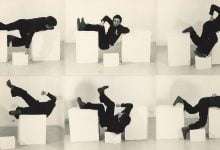What is Conceptual Art?
Conceptual art is both the process and result of art which goes beyond traditional media, materials, or subject matter. The intent of conceptual art is to communicate ideas, messages, or emotions.
The term conceptual art was first coined by Lawrence Alloway in 1966 to describe works that were concerned with ideas rather than objects. It has since come to be associated with any artistic practice that does not rely on traditional mediums or subject matters.
History of Conceptual Art Movement & Revolution Throughout the 20th Century
Avant-garde artists from the 20th century have been constantly challenging the status quo and they have been inventing new artistic styles.
The conceptualism movement has existed since the 1960s, when there was a shift in aesthetics, meaning that concept became more important than craft. The term “conceptualism” was first used by Robert Smithson in 1967 to describe his own work, which he described as “a type of art that is not dependent on skill or craft.”
During this time, there was also an increase in popularity for conceptual art pieces. Conceptualism is often seen as a consequence of modernity – it’s about ideas and concepts instead of realistic depictions. Some other art movements that you may know are minimalism and pop art.
The Meaning Behind “Conceptual Art”
The term “conceptual art” originated in the world of conceptualism, which was a form of avant-garde and neo-avant-garde art developed in the 1960s.
The meaning of conceptual art is often confusing to those who are not well-versed in modern and contemporary art. Conceptual artists often explore ideas and concepts rather than executing a traditional representation of form or reality.
Conceptual art is categorized as any artwork that does not rely on traditional artistic media such as painting, sculpture, drawing, or printmaking to communicate its message. This can include performance pieces or any other artwork that includes an idea or concept as the focal point instead of the traditional aesthetic form.
Many people don’t know what abstract means in relation to modern.
Why Abstract? Why Non-objective?
Abstract art is a form of art in which the artist has conveyed a feeling or impression rather than something concrete. It does not represent visible objects, but may suggest emotions.
The term “abstract” comes from the Latin word “absractus,” meaning to draw or pull away.
In the case of abstract art, it is the viewer who draws the meaning from what is being seen.
This can also be called non-objective art because it does not have any objective reality to it.
How Conceptual Art Influenced Pop Culture And Shaped Modern Society
Conceptual art is an art that does not try to represent or depict any objects or ideas, but instead tries to communicate meaning. It is considered as the most influential movement of the twentieth century.
The influence of Conceptual Art can be seen everywhere in the modern society. From galleries to celebrity culture, it has become a common practice.
